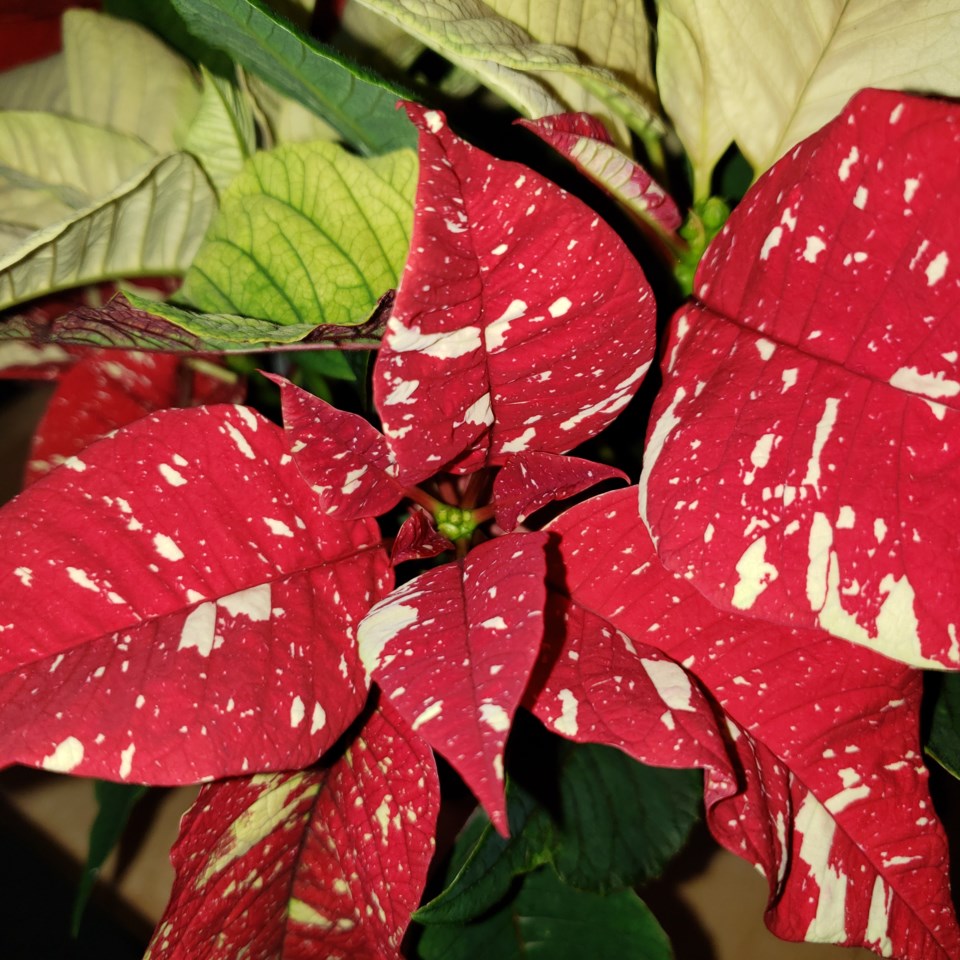Last week was the first in a series of three articles devoted to the poinsettia. A bit about the history and breeding of the poinsettia will shift this week to some of the folklore surrounding this plant and how to ensure your poinsettia survives well past the holiday season.
One of the most famous legends of the poinsettia originates in Mexico. A poor girl named Maria and her little brother Pablo were looking forward to the Christmas festival at their local church. The celebration always included a manger scene and it was customary to place gifts to the church around the manger. In spite of the children loving the days leading up to the festival, they had no money to give to the church. On their way to church on Christmas Eve, they stopped to pick weeds growing by the roadside so they would not arrive empty-handed. The other children taunted them but Maria and Pablo continued to place the weeds they had picked around the manger scene. Miraculously, according to the legend, the green top leaves began to turn into bright red petals and soon the manger was surround by the beautiful star-like flowers of the poinsettia we recognize and know today.
Now that we all have smiles on our faces, here is some other good news about the poinsettia. As we learned from the article published last week, the poinsettia is a member of the Euphorbia family. Many of the plants that are part of this family have a milky sap which is often quite toxic. However, in spite of having a milky sap, the poinsettia is not poisonous at all. Studies have shown that a small child would have to consume over 500 leaves before showing any harmful effect by consuming this plant. Read on to learn how to keep your poinsettia beautiful!

It seems that when we purchase plants, they look stunning but then we take them home and it is just a downhill slide! Well the secret to success is beginning with a healthy plant to start. Ensure it has large well-coloured bracts and that the small true flowers in the middle of the coloured bracts are still present. If the small yellow flowers are missing, the plant is not fresh. It should be properly wrapped and taken directly home to avoid excess chilling which can cause sudden leaf drop. If the temperature is more than a few degrees below 0° C, your plant will need to be wrapped in paper and then in plastic. If you take a poinsettia outside with just that thin film of plastic, you will end up with a plant that has no leaves! Keep the plant at normal room temperature, away from drafts in bright filtered light. Direct sunlight from an east or west window is not too bright, but a sheer curtain should filter the light from a direct southern exposure. Water thoroughly when the potting soil has dried slightly. Most poinsettias are sold with a plastic sleeve to hide the pot and protect furniture from dripping water. Within a half-hour after watering the sleeve should be removed and emptied so that the plant is not left standing in water. There is little need for fertilizer during the Christmas season since most growers will have included a slow-release fertilizer in the growing medium. Provided with bright light and even moisture, most poinsettia plants should remain attractive for months.
Giving a poinsettia is truly a gift that grows and if your recipient is willing to take on the challenge of getting their poinsettia to rebloom then be sure you do not miss next weeks’ article! All the best to you and yours throughout the holiday season.
Hanbidge is the Lead Horticulturist with Orchid Horticulture. Find us at www.orchidhort.com; by email at [email protected]; on Facebook @orchidhort and on Instagram at #orchidhort. Tune into GROW Live on our Facebook page or check out the Youtube channel GROW.




